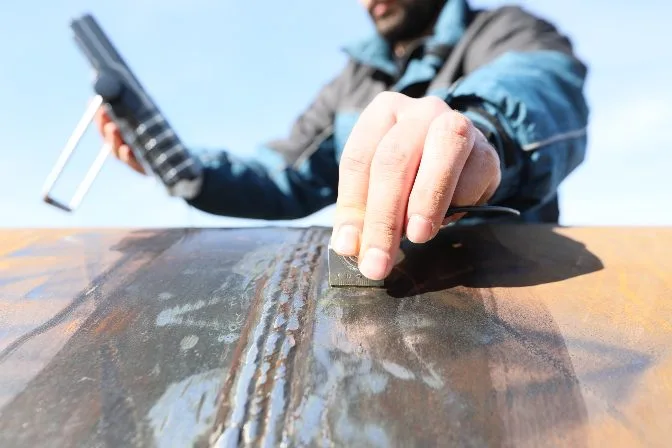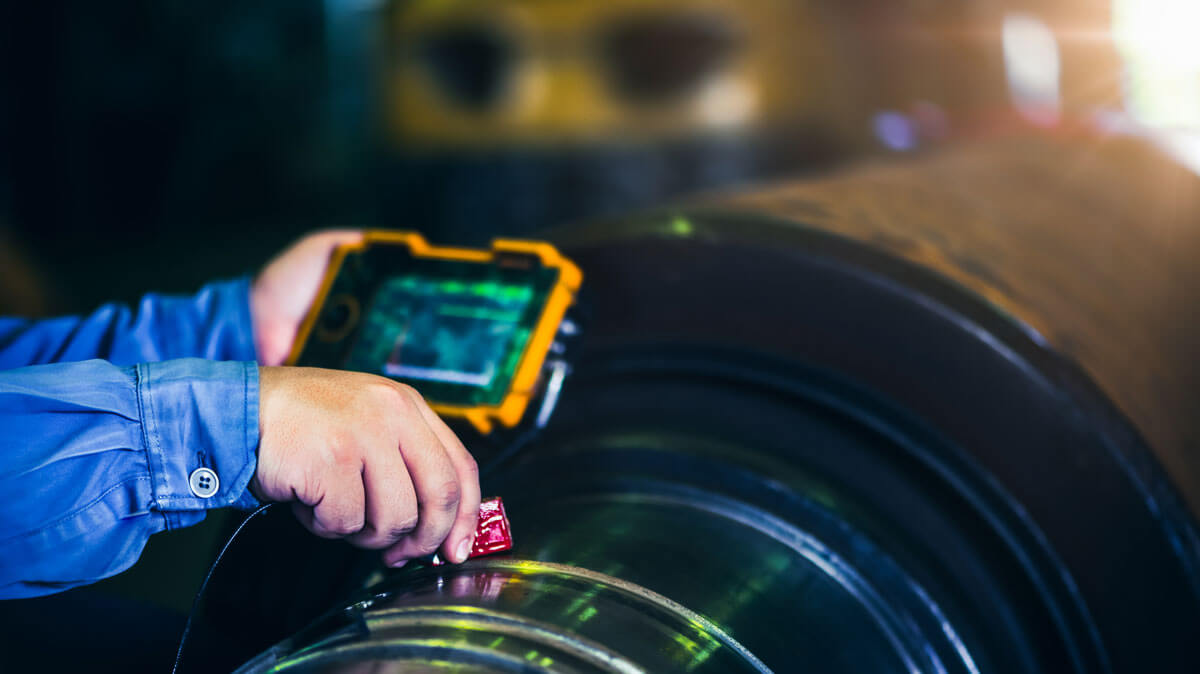A Comprehensive Overview to Understanding Just How Welding Inspection Works: Techniques, Specifications, and Best Practices for Quality Control in Metal Fabrication
Comprehending the ins and outs of welding inspection is vital for preserving the integrity of metal construction. Different methods, such as ultrasonic and visual screening, play a crucial role in identifying possible flaws, while adherence to developed standards ensures conformity and toughness. Implementing ideal practices can considerably improve high quality guarantee actions. The landscape of welding assessment is not without its difficulties. What issues arise in the field, and exactly how can these be efficiently minimized? Discovering these aspects discloses the deepness of this important technique.
Importance of Welding Assessment
Although welding is an essential process in different industries, its honesty straight influences the security and efficiency of elements and structures. Efficient welding examination is crucial for determining issues that could compromise the top quality and toughness of welded joints. This procedure makes certain adherence to established requirements and specifications, which are crucial for keeping architectural integrity and operational integrity.
Welding assessment serves several objectives, including verifying that the welding procedure has been implemented appropriately, examining the top quality of products made use of, and verifying that the ended up item satisfies regulative and industry requirements (Houston Welding Inspection). Through strenuous assessment, potential issues such as porosity, splits, and insufficient combination can be identified early, protecting against pricey repair work and mitigating safety risks
Furthermore, consistent welding assessments foster confidence among stakeholders, including designers, customers, and regulatory bodies, by showing a commitment to quality control. The importance of welding evaluation can not be overstated; it is indispensable not just for conformity with legal requirements however also for boosting the overall performance of bonded frameworks. Inevitably, a durable welding inspection program is a positive procedure that safeguards versus failings, making certain the longevity and reliability of welded parts in their intended applications.
Typical Welding Inspection Methods

Aesthetic evaluation is the first line of defense, allowing inspectors to determine surface area issues such as fractures, damages, or incomplete blend. Radiographic testing uses X-rays or gamma rays to disclose internal defects, making it optimal for complicated welds. Ultrasonic screening uses high-frequency audio waves to discover subsurface problems, offering accurate dimensions of weld honesty.
Magnetic fragment screening is effective for ferromagnetic materials, highlighting surface and near-surface gaps when fragments are related to a magnetic field. On the other hand, color penetrant screening makes use of a fluid color to expose surface-breaking defects, making certain that also the tiniest problems are identified.
Each method has its strengths and restrictions, frequently demanding a mix of techniques for thorough analysis - Houston Welding Inspection. By applying these inspection methods, quality control in steel manufacture is achieved, ensuring that bonded frameworks satisfy safety and efficiency standards
Sector Specifications for Welding


The American Welding Society (AWS) and the American National Standards Institute (ANSI) are 2 famous companies that develop welding standards. AWS D1.1, as an example, describes the needs for welding steel frameworks, while AWS D1.2 concentrates on aluminum. Globally, you could check here the ISO 3834 common addresses high quality needs for fusion welding, giving a framework applicable throughout nationwide boundaries.
Best Practices for Quality Control
Quality assurance in welding is critical to attaining secure and long lasting building and constructions. Developing a comprehensive top quality administration system (QMS) tailored to the particular welding job is essential.
Routine training and qualification of welding personnel are essential for maintaining a proficient labor force. Constant education on the most up to date welding techniques and modern technologies ensures that assessors and welders are experienced regarding current criteria and practices.
Additionally, performing pre-weld examinations to examine products and equipment can avoid problems prior to they occur. Houston Welding Inspection. During the welding procedure, real-time surveillance and documents of welding specifications help recognize incongruities immediately. Post-weld evaluations must include detailed assessments making use of non-destructive testing (NDT) approaches to guarantee the stability of the welds
Furthermore, maintaining clear communication amongst staff member promotes a society of quality. Normal audits and testimonials of the welding process aid determine locations for enhancement. By sticking to these best practices, organizations can accomplish optimal quality guarantee, inevitably resulting in enhanced safety and security and performance in steel construction projects.
Difficulties in Welding Assessment
Although welding examination is important for making sure structural honesty, it provides a selection of obstacles that can make complex the evaluation procedure. One significant challenge is the irregularity in welding strategies and products used, which can impact the uniformity of weld quality. Different welders may use varying methods, leading to discrepancies that inspectors requirement to evaluate and determine.
Another challenge includes the discovery of issues. Non-destructive screening (NDT) techniques, such as ultrasonic and radiographic screening, can be complicated and require useful content experienced professionals to translate results properly. False positives or negatives can take place, potentially causing costly rework or compromised safety and security.
Furthermore, the existence of ecological elements, such as temperature level and humidity, can affect the honesty of welds and the efficiency of inspection methods. Inspectors need to likewise navigate the regulatory landscape, making certain compliance with industry requirements, which can vary by territory and application.
Verdict
In verdict, welding evaluation plays an essential duty in ensuring the stability and safety and security of metal construction. Using a variety of examination strategies, sticking to established sector criteria, and implementing efficient top quality my site management practices collectively enhance the reliability of bonded frameworks. Despite the obstacles dealt with in the evaluation procedure, a commitment to continuous enhancement and adherence to ideal methods can significantly bolster the top quality assurance framework, fostering higher confidence among stakeholders in the welding industry.
Effective welding examination is important for determining flaws that could compromise the top quality and sturdiness of bonded joints.Furthermore, regular welding examinations foster self-confidence among stakeholders, consisting of engineers, customers, and regulative bodies, by showing a commitment to high quality guarantee.The American Welding Culture (AWS) and the American National Requirement Institute (ANSI) are 2 prominent companies that establish welding requirements. During the welding process, real-time monitoring and documentation of welding parameters help identify incongruities instantly. Despite the difficulties faced in the examination procedure, a commitment to continual enhancement and adherence to best methods can significantly strengthen the top quality guarantee framework, cultivating greater confidence amongst stakeholders in the welding industry.